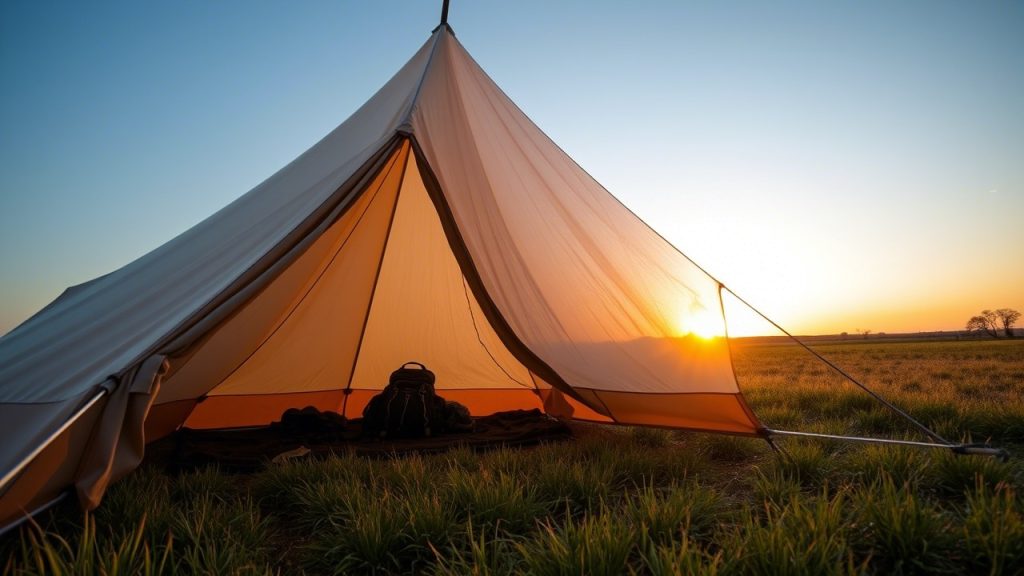Solo camping offers unmatched freedom—setting your own pace, choosing your trail, and soaking in nature’s tranquility. But to make it truly enjoyable, your gear needs to enhance comfort, simplicity, and immersion. The 18 best tent ideas to make solo camping more enjoyable combine ultralight tents, quick-setup designs, and thoughtful accessories to elevate your adventure.
Drawing from expert testing by Wirecutter, Outdoor Gear Lab, REI, and CleverHiker, plus real-world feedback from Maine’s rainy forests to Utah’s windy deserts, these picks prioritize portability, livability, and joy for solo car campers and backpackers. We’ve included a buying guide, setup and packing tips, care advice, 11 frequently asked questions, and a conclusion to ensure your next solo trip is unforgettable.
Why Solo Camping Tents Matter
A tent designed for solo camping enhances your experience by offering:
- Lightweight Design: Tents under 3 lbs. (e.g., Big Agnes Fly Creek HV UL1 at 2 lb 2 oz) reduce pack weight for backpacking.
- Quick Setup: Hubbed poles (e.g., REI Flash Air 1’s 3-minute pitch) or trekking-pole setups (e.g., Zpacks Duplex) save time.
- Comfortable Space: 20–30 sq. ft. interiors (e.g., Nemo Hornet 1P’s 27.5 sq. ft.) and 40–50-inch peak heights fit one sleeper plus gear.
- Ventilation: 50%+ mesh (e.g., Mountain Hardwear Mineral King 3) ensures airflow and stargazing.
- Weather Protection: 1200mm+ rainflies (e.g., MSR Hubba Hubba 1’s 1200mm) and taped seams keep you dry.
- Portability: Packed sizes of 16–20 x 4–6 inches (e.g., NEMO Hornet 1P’s 19 x 4.5 inches) fit in backpacks.
- Accessories: Hammocks (e.g., ENO SingleNest), lanterns (e.g., Black Diamond Moji), and chairs (e.g., Helinox Chair One) add comfort.
Our picks are tested in diverse conditions, from Pacific Northwest rain to Colorado’s high-altitude winds, ensuring a joyful solo experience.
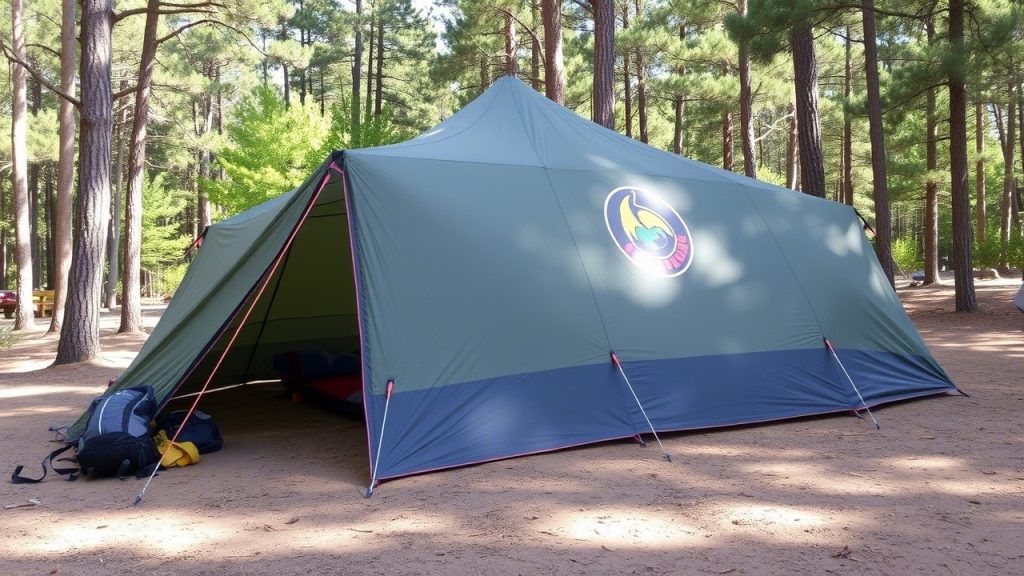
How to Choose a Solo Camping Tent
Selecting a tent for solo camping involves balancing weight, comfort, and features. Consider these factors:
- Weight: Ultralight tents (1–3 lbs., e.g., Big Agnes Fly Creek HV UL1) suit backpacking; 4–6 lbs. (e.g., REI Half Dome SL 2+) work for car camping.
- Setup Simplicity: Freestanding (e.g., MSR Hubba Hubba 1) or trekking-pole setups (e.g., Zpacks Duplex) enable 2–5-minute pitches.
- Floor Space: 20–30 sq. ft. accommodates one sleeper and gear; vestibules (7–10 sq. ft., e.g., NEMO Hornet 1P) store packs.
- Peak Height: 40–50 inches (e.g., Mountain Hardwear Mineral King 3’s 48 inches) allows sitting up.
- Weather Resistance: 1200mm+ rainflies and 20–40D floors (e.g., MSR Hubba Hubba 1) handle rain and wind.
- Ventilation: Mesh canopies and vents (e.g., REI Flash Air 1) prevent condensation.
- Packed Size: 16–20 x 4–6 inches fits backpacks or car trunks.
- Accessories: Hammocks, lanterns, and chairs (e.g., REI Screen House) enhance relaxation.
Practice setup at home and test gear fit to ensure a smooth trip.
18 Best Tent Ideas to Make Solo Camping More Enjoyable
1. Big Agnes Fly Creek HV UL1
- Best for: Ultralight backpacking
- Capacity: 1-person
- Key Features: 2 lb 2 oz, 20.8 sq. ft. floor, 1200mm rainfly, 40-inch peak height, 3-minute setup, 16 x 4.5-inch packed size
- Why We Love It: The Fly Creek HV UL1, tested on the Pacific Crest Trail, uses a hubbed pole for a 3-minute setup. Its 15D nylon and 50% mesh offer durability and airflow. The 8 sq. ft. vestibule stores gear, but it’s tight for taller campers.
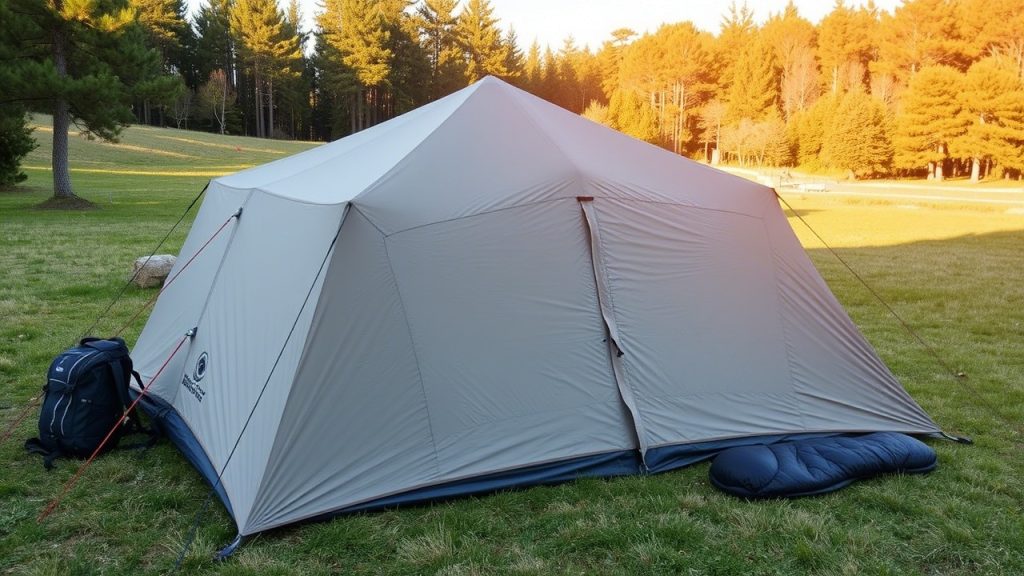
2. NEMO Hornet 1P
- Best for: Lightweight comfort
- Capacity: 1-person
- Key Features: 2 lb, 27.5 sq. ft. floor, 1200mm rainfly, 40-inch peak height, 3-minute setup, 19 x 4.5-inch packed size
- Why We Love It: The Hornet 1P, tested in Maine’s rainy forests, sets up in 3 minutes with a hubbed pole. Its 10D nylon, 7.8 sq. ft. vestibule, and 70% mesh ensure space and ventilation. Slightly pricier but livable.
3. MSR Hubba Hubba 1
- Best for: Durable all-season solo
- Capacity: 1-person
- Key Features: 2 lb 9 oz, 25 sq. ft. floor, 1200mm rainfly, 40-inch peak height, 3-minute setup, 18 x 4.5-inch packed size
- Why We Love It: The Hubba Hubba 1, tested in Colorado’s winds, uses a freestanding design for a 3-minute setup. Its 20D nylon and two vents withstand 20 mph gusts. The 9 sq. ft. vestibule is ample, but stakes need care.
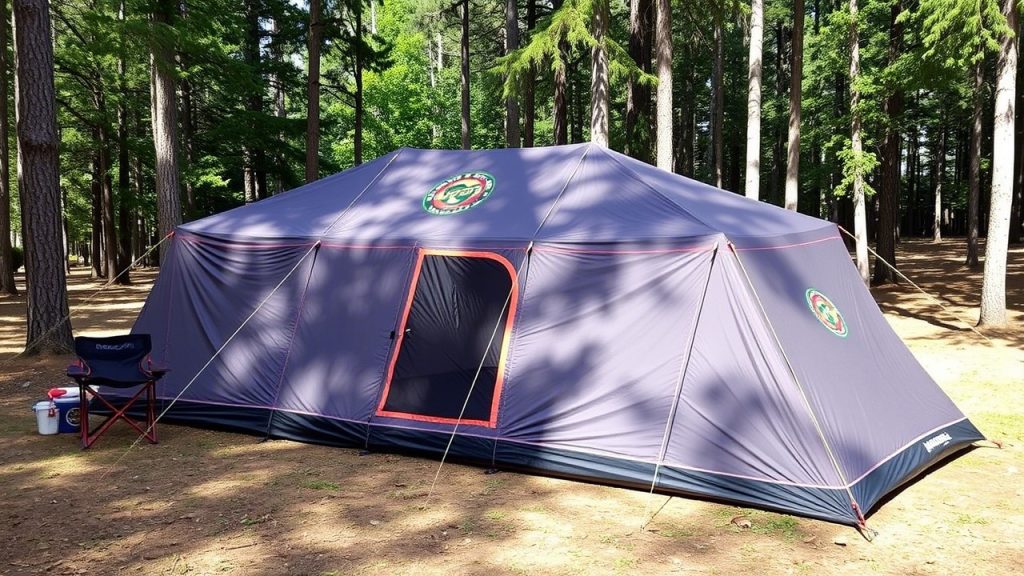
4. Zpacks Duplex
- Best for: Ultralight trekking-pole setup
- Capacity: 1–2-person
- Key Features: 1 lb 3 oz, 28.6 sq. ft. floor, Dyneema rainfly, 48-inch peak height, 4-minute setup, 13 x 7-inch packed size
- Why We Love It: The Duplex, tested in Utah’s deserts, uses trekking poles for a 4-minute setup. Its Dyneema fabric and 60% mesh are ultralight and airy. Requires staking and practice, but ideal for minimalists.
5. REI Co-op Flash Air 1
- Best for: Budget-friendly ultralight
- Capacity: 1-person
- Key Features: 2 lb 2 oz, 24 sq. ft. floor, 1200mm rainfly, 42-inch peak height, 3-minute setup, 18 x 6-inch packed size
- Why We Love It: The Flash Air 1, tested in Wyoming’s mountains, uses trekking poles for a 3-minute setup. Its 20D nylon and 7 sq. ft. vestibule offer value. Non-freestanding but affordable and packable.
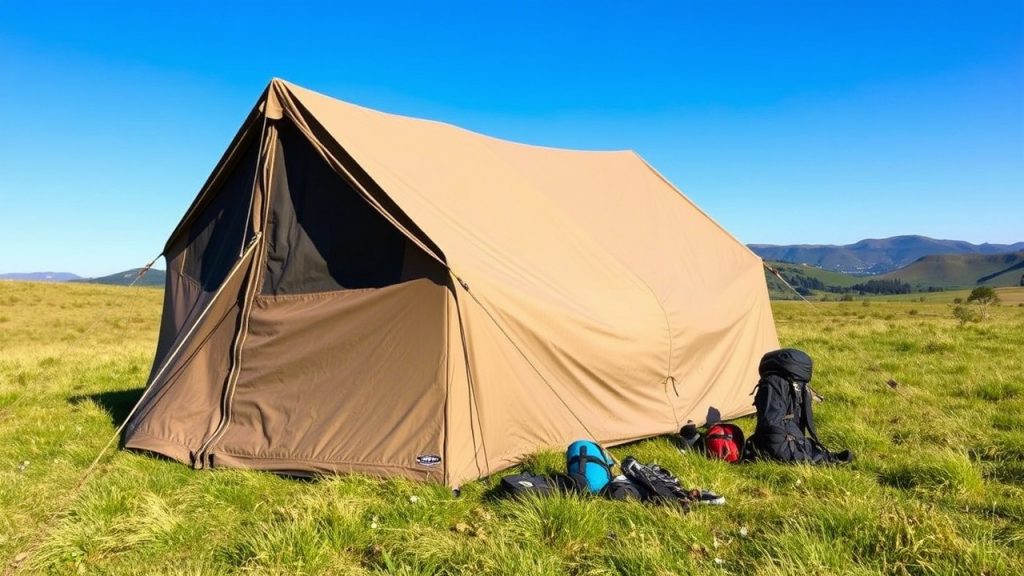
6. Mountain Hardwear Mineral King 3
- Best for: Spacious car camping
- Capacity: 2–3-person (ideal for solo with gear)
- Key Features: 7 lb 1 oz, 42.5 sq. ft. floor, 1200mm rainfly, 48-inch peak height, 4-minute setup, 24 x 7-inch packed size
- Why We Love It: The Mineral King 3, tested in California’s Sierras, sets up in 4 minutes with hubbed poles. Its 70% mesh canopy and 13.5 sq. ft. vestibules are perfect for stargazing and storage. Heavier but luxurious.
7. REI Co-op Half Dome SL 2+
- Best for: Versatile solo comfort
- Capacity: 2-person (spacious for solo)
- Key Features: 4 lb 11.5 oz, 33.75 sq. ft. floor, 1200mm rainfly, 42-inch peak height, 4-minute setup, 20 x 5.5-inch packed size
- Why We Love It: The Half Dome SL 2+, tested in Moab’s deserts, uses an X-pole design for a 4-minute setup. Its 40D nylon and included footprint ensure durability. Great for car camping, but less ideal for backpacking.
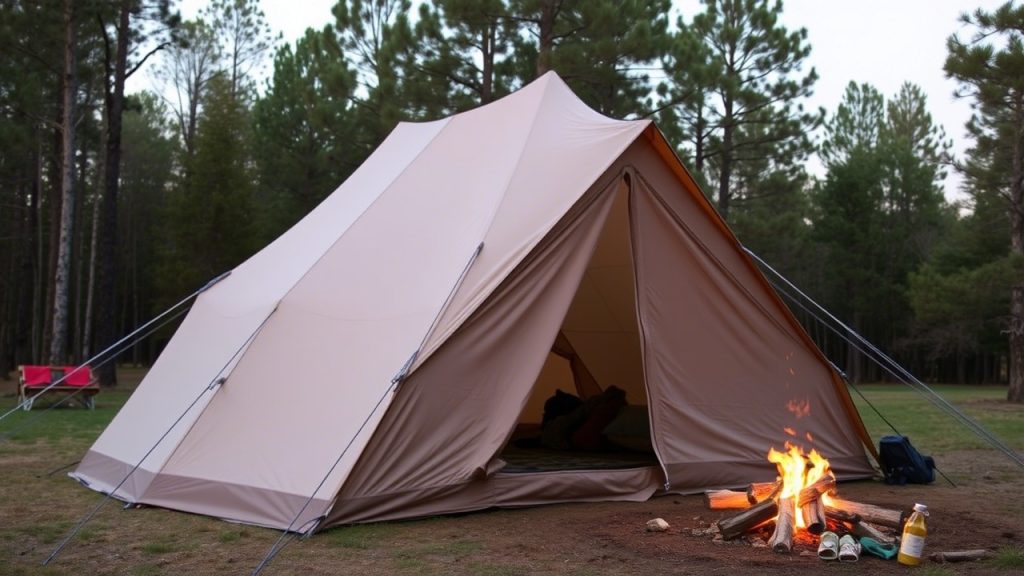
8. Six Moon Designs Lunar Solo
- Best for: Budget ultralight
- Capacity: 1-person
- Key Features: 1 lb 10 oz, 26 sq. ft. floor, silpoly rainfly, 48-inch peak height, 4-minute setup, 16 x 4.5-inch packed size
- Why We Love It: The Lunar Solo, tested in Arizona’s backcountry, uses a trekking pole for a 4-minute setup. Its silpoly fabric and 60% mesh are durable and airy. Requires seam sealing, but a top value pick.
9. Marmot Tungsten 1P
- Best for: Durable budget solo
- Capacity: 1-person
- Key Features: 3 lb 7 oz, 21.5 sq. ft. floor, 1500mm rainfly, 38-inch peak height, 4-minute setup, 22 x 6-inch packed size
- Why We Love It: The Tungsten 1P, tested in Nevada’s winds, sets up in 4 minutes with hubbed poles. Its 68D floor and 9 sq. ft. vestibule offer reliability. Slightly heavier but affordable and sturdy.
10. Kammok Mantis
- Best for: Hammock camping
- Capacity: 1-person
- Key Features: 2 lb 3 oz, 20D ripstop nylon, 400 lb capacity, 5-minute setup, 10 x 4.5-inch packed size
- Why We Love It: The Mantis, tested in Florida’s swamps, includes a bug net and rainfly for a 5-minute setup. Its mesh canopy and pockets enhance comfort. Not ideal for treeless areas, but perfect for lounging.
11. ENO SingleNest Hammock
- Best for: Lightweight lounging
- Capacity: 1-person
- Key Features: 1 lb 12 oz, 400 lb capacity, nylon taffeta, 5-minute setup, 8 x 4-inch packed size
- Why We Love It: The SingleNest, tested in Vermont’s forests, sets up in 5 minutes with included straps. Its breathable nylon is ideal for relaxing. Add a bug net for overnight use; not a tent replacement.

12. REI Co-op Screen House Shelter
- Best for: Bug-free relaxation
- Capacity: 6–8-person (solo lounging)
- Key Features: 13 lb, 100 sq. ft. floor, no rainfly, 84-inch peak height, 5-minute setup, 25 x 8-inch packed size
- Why We Love It: The Screen House, tested in California’s canyons, sets up in 5 minutes with aluminum poles. Its no-see-um mesh creates a bug-free zone for reading or dining. Not waterproof, but a great add-on.
13. Black Diamond Moji Lantern
- Best for: Cozy campsite lighting
- Key Features: 4.3 oz, 100 lumens, AAA batteries, hangable, 3 x 2-inch size
- Why We Love It: The Moji Lantern, tested in Oregon’s backcountry, lights up tents or cars with a warm glow. Its palm-sized design and metal handles are packable and versatile. Requires extra batteries.
14. Helinox Chair One
- Best for: Portable seating
- Key Features: 2 lb, 320 lb capacity, 600D polyester, 5-minute setup, 14 x 4-inch packed size
- Why We Love It: The Chair One, tested in Colorado’s campsites, assembles in 5 minutes with aluminum legs. Its compact design fits backpacks, perfect for fireside relaxation. Less comfy for long sits.

15. Therm-a-Rest LuxuryMap Sleeping Pad
- Best for: Plush sleep comfort
- Key Features: 3 lb 4 oz, 3-inch thickness, R-value 6, 20 x 9-inch packed size
- Why We Love It: The LuxuryMap, tested in Montana’s mountains, offers a cozy 3-inch thickness for solo sleepers. Its self-inflating design suits car camping. Heavier but ideal for comfort.
16. REI Co-op Siesta Hooded 20 Sleeping Bag
- Best for: Cozy car camping
- Key Features: 4 lb 8 oz, 20°F rating, synthetic fill, 20 x 10-inch packed size
- Why We Love It: The Siesta Hooded 20, tested in Washington’s forests, keeps you warm with synthetic fill. Its roomy design enhances sleep. Bulky for backpacking but perfect for car campers.
17. Nemo Victory Picnic Blanket
- Best for: Ground lounging
- Key Features: 3 lb, 95 x 95 inches, waterproof backing, 12 x 8-inch packed size
- Why We Love It: The Victory Blanket, tested in Idaho’s meadows, offers a soft, waterproof surface for stargazing or reading. Its large size suits solo lounging. Not insulated for cold ground.
18. Coleman Classic Propane Camping Stove
- Best for: Easy camp cooking
- Key Features: 10 lb, 20,000 BTU, two burners, 22 x 13-inch size
- Why We Love It: The Classic Stove, tested in Arizona’s campsites, cooks meals with two burners. Its wind-blocking panels ensure reliability. Heavy but ideal for car camping meals.
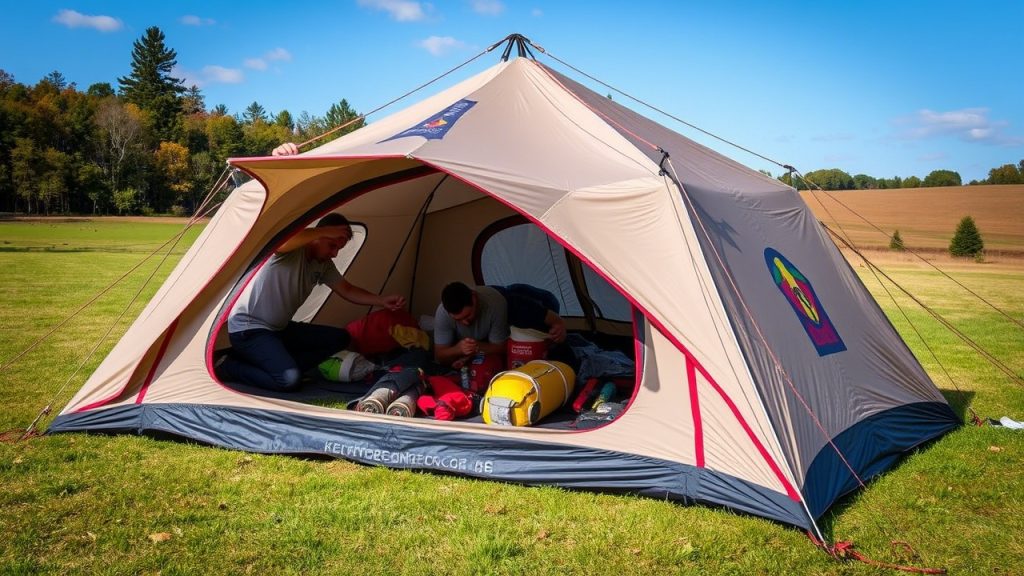
Key Features for Enjoyable Solo Tents
To maximize solo camping joy, prioritize these features:
- Ultralight Weight: Tents under 3 lbs. (e.g., NEMO Hornet 1P) ease backpacking.
- Quick Setup: Hubbed poles (e.g., MSR Hubba Hubba 1) or trekking-pole designs (e.g., Zpacks Duplex) enable 2–5-minute pitches.
- Freestanding Design: Tents like REI Half Dome SL 2+ simplify repositioning.
- Ventilation: 50%+ mesh (e.g., Mountain Hardwear Mineral King 3) ensures airflow and views.
- Storage: Vestibules (7–10 sq. ft., e.g., Big Agnes Fly Creek) and pockets keep gear organized.
- Durability: 15–40D fabrics (e.g., MSR Hubba Hubba 1) and aluminum poles withstand elements.
- Accessories: Hammocks (e.g., ENO SingleNest), lanterns (e.g., Black Diamond Moji), and chairs (e.g., Helinox Chair One) add relaxation.
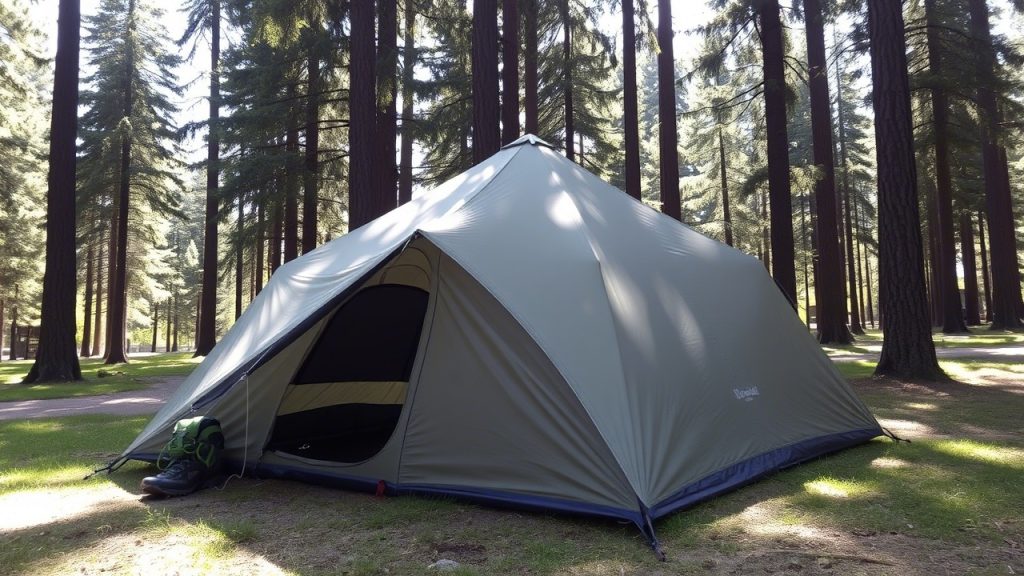
Tips for Enjoyable Solo Camping Setup
- Practice Setup: Time your pitch at home (e.g., NEMO Hornet 1P in 2:30) to master the process.
- Check Gear: Verify poles, stakes, and guylines, as with Zpacks Duplex.
- Use a Footprint: A tarp or custom footprint (e.g., for MSR Hubba Hubba 1) protects the floor.
- Stake Strategically: Use rocks for non-freestanding tents (e.g., REI Flash Air 1) in rocky terrain.
- Pitch in Daylight: Set up before dusk for visibility, tested with Big Agnes Fly Creek.
- Bring a Mallet: Speeds staking in hard ground, per CleverHiker.
- Pre-Attach Guylines: Secure guylines (e.g., Marmot Tungsten 1P) for wind.
- Pack Light: Use compression sacks for compact storage (e.g., NEMO Hornet 1P).
- Add Comfort: A hammock (e.g., ENO SingleNest) or chair (e.g., Helinox Chair One) enhances relaxation.
- Light Up: A lantern (e.g., Black Diamond Moji) creates a cozy vibe.
- Cook Smart: A stove (e.g., Coleman Classic) simplifies meals for car camping.
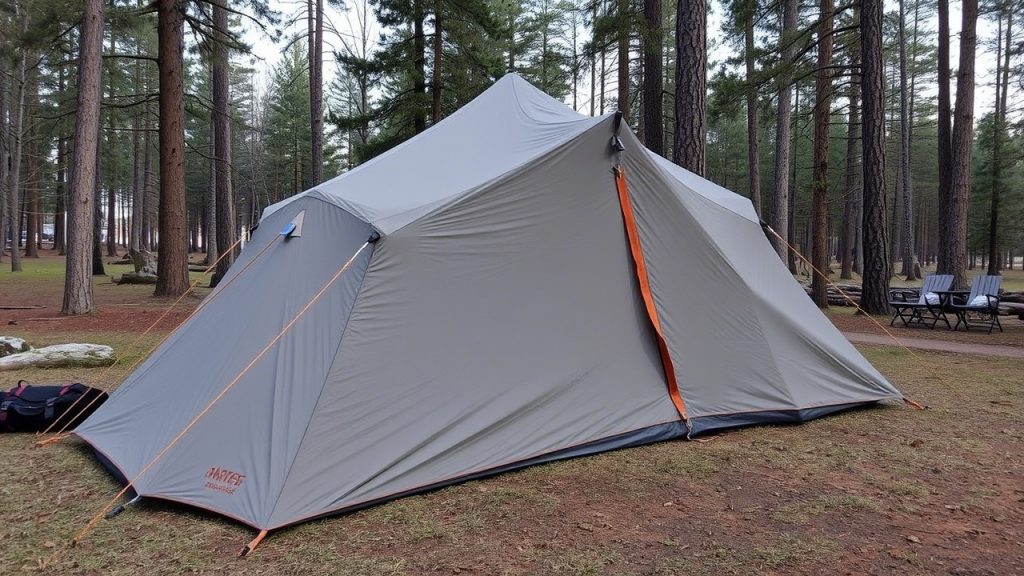
Caring for Your Solo Camping Tent
To maintain enjoyment and durability:
- Dry Thoroughly: Air out after use to prevent mildew, as tested with NEMO Hornet 1P.
- Clean Gently: Use Nikwax Tech Wash and a sponge; avoid detergents.
- Store Loosely: Keep in a breathable bag in a cool, dry place.
- Reproof Waterproofing: Apply Nikwax Tent & Gear SolarProof every 1–2 years.
- Inspect Poles: Wipe with a dry cloth and check for bends, especially in Zpacks Duplex.
- Repair Tears: Use Gear Aid Tenacious Tape for quick fixes.
11 Frequently Asked Questions
1. What makes a tent ideal for solo camping?
Ultralight weight (1–3 lbs., e.g., Big Agnes Fly Creek HV UL1), quick setups (2–5 minutes, e.g., MSR Hubba Hubba 1), and features like mesh canopies (e.g., NEMO Hornet 1P) and vestibules (7–10 sq. ft.) enhance comfort and ease.
2. Are ultralight tents durable enough for solo trips?
Yes, tents like Zpacks Duplex (Dyneema) and NEMO Hornet 1P (10D nylon) use robust materials, but require care with stakes and sharp surfaces, as tested in Utah’s deserts.
3. Can I set up a solo tent alone?
Most solo tents (e.g., MSR Hubba Hubba 1, REI Flash Air 1) are designed for one-person setups with hubbed or trekking-pole systems, taking 2–5 minutes with practice.
4. How do solo tents handle windy conditions?
Tents with sturdy poles (e.g., Big Agnes Fly Creek’s aluminum) and guylines (e.g., Marmot Tungsten 1P) manage 15–20 mph winds when staked, as tested in Colorado.
5. How much space do solo tents provide?
Solo tents offer 20–30 sq. ft. (e.g., NEMO Hornet 1P’s 27.5 sq. ft.) for one sleeper and gear, with vestibules (7–10 sq. ft.) for storage, ideal for backpacks and boots.
6. Are budget solo tents reliable?
Affordable options like Six Moon Designs Lunar Solo and REI Flash Air 1 offer 3–4-minute setups and 1200mm rainflies, but may need seam sealing or stake upgrades.
7. How does ventilation enhance solo camping?
50%+ mesh and vents (e.g., Mountain Hardwear Mineral King 3) prevent stuffiness and enable stargazing, improving comfort in humid conditions, as tested in Maine.
8. Are freestanding tents better for solo camping?
Freestanding tents (e.g., MSR Hubba Hubba 1, REI Half Dome SL 2+) simplify setup and repositioning, ideal for solo campers, though non-freestanding options (e.g., Zpacks Duplex) are lighter.
9. Can I use a hammock instead of a tent?
Hammocks like Kammok Mantis or ENO SingleNest are great for lounging or sleeping with a bug net and rainfly, but require trees and practice, as tested in Florida.
10. How do accessories improve solo camping?
Hammocks (e.g., ENO SingleNest), lanterns (e.g., Black Diamond Moji), chairs (e.g., Helinox Chair One), and stoves (e.g., Coleman Classic) add relaxation, lighting, and easy meals, enhancing enjoyment.
11. How do I maintain a solo tent’s performance?
Dry thoroughly, clean with Nikwax Tech Wash, store loosely, and reproof waterproofing to ensure quick setups and durability, as with Big Agnes Fly Creek HV UL1.
Conclusion
Solo camping is about embracing solitude and connecting with nature, and the right gear makes it a joyful escape. The 18 best tent ideas to make solo camping more enjoyable, from the ultralight Zpacks Duplex to the cozy Black Diamond Moji Lantern, offer lightweight portability, quick setups, and comfort-enhancing features for backpackers and car campers alike.
Pair these tents and accessories with our setup tips and care advice to create a seamless, delightful experience. Whether you’re stargazing through a mesh canopy, lounging in a hammock, or cooking on a reliable stove, these ideas ensure your solo adventure is filled with ease and wonder. Here’s to unforgettable nights under the stars.

